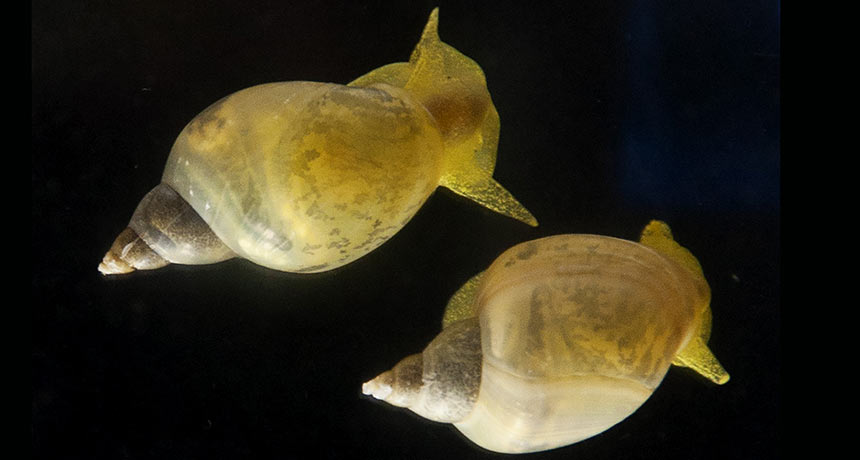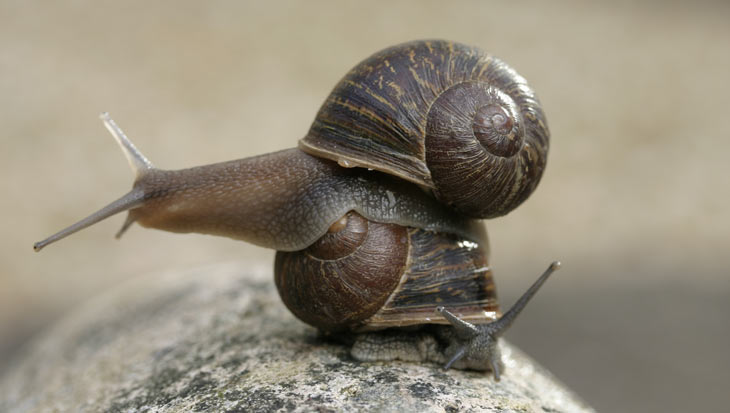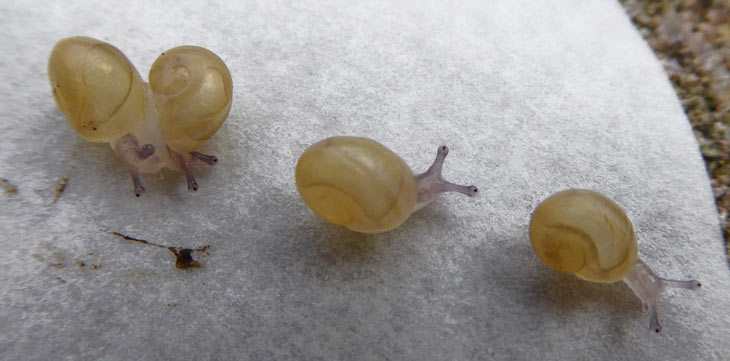
MIRROR IMAGE Tweaking a gene with the gene editor CRISPR/Cas9 caused the shells of pond snails that normally coil to the right (top) to twist to the left (bottom).
Courtesy Kuroda Lab
- More than 2 years ago
A genetic spin doctor sets snail shells to swirl clockwise, new research confirms. And the twist in this story comes at the beginning — when snail embryos are just single cells.
Though most pond snails (Lymnaea stagnalis) have shells that coil clockwise, a few have taken a left turn, curling counterclockwise. Researchers had strong evidence that a mutation in a gene called Lsdia1 caused the counterrevolution, but there was a possibility that the similar Lsdia2 gene might be involved. The two genes are 89.4 percent identical, so teasing out which was responsible was tricky.
Working at the Tokyo University of Science, chemist and biologist Reiko Kuroda and colleague Masanori Abe snipped Lsdia1 with the gene editor CRISPR/Cas9. The snip made a mutation in the gene that could be passed on to future generations. Snails that inherited two edited copies of the gene developed left-coiling, or sinistral, shells, say the researchers, who have relocated to the Chubu University in Kasugai, Japan.
The accomplishment — reported May 14 in Development — marks the first time researchers have been able to make heritable changes in snail genes, says evolutionary geneticist Angus Davison of the University of Nottingham in England. Teams led by Davison and Kuroda had previously published evidence independently that Lsdia1 is responsible for the twist, but the new paper provides the definitive proof, Davison says.

In the new study, Kuroda and Abe also found that Lsdia1 causes the cells’ internal scaffolding — the cytoskeleton — to skew to the left or right very early on, when snail embryos are just single cells. Finding that early twist solves a long-running mystery: When does asymmetry start?
Like snails, humans and many other organisms are asymmetrical, with internal organs growing on particular sides of the body. That asymmetry is necessary to fold intestines that are many times the length of the body in an orderly manner into a relatively small space, says Martin Blum, a developmental biologist at the University of Hohenheim in Stuttgart, Germany. Two genes, nodal and Pitx, are known to be involved in giving rise to that asymmetry, by being produced on only one side of the embryo. Gene-edited snail embryos turned on those genes in a pattern that is a mirror image to that of right-coiling snails, creating lefties, the researchers found.

“Now we know it starts in the symmetrical embryo,” Blum says. Lsdia1’s protein tugs on the cytoskeleton, which leads cells to divide in a spiral pattern. That somehow causes nodal and Pitx to turn on on one side of the embryo. “This riddle is solved,” he says, but there are still a few steps missing to connect how the skewing of cell division leads to activity of the two genes. Kuroda says she is working to fill in the details.
While the left-swirling version of Lsdia1 may help researchers understand asymmetry, it’s probably not very useful for snails in the wild. Left-swirling snails have trouble hatching and finding mates, Davison says. “If you’re a snail out in the wild, it’s game over for that mutation.”






